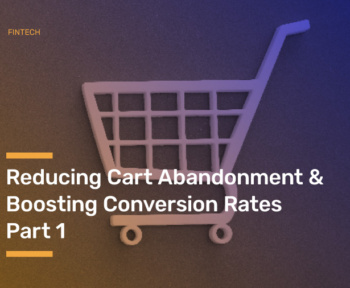
Table of Contents
In today’s world, where accessibility to any products and services has increased, consumer behaviors have changed, various factors influence purchasing decisions, and the e-commerce market has become more saturated and competitive.
In this context, businesses operating in the e-commerce sector need to prioritize providing their customers with a seamless and easy shopping experience, in addition to parameters such as price, quality, target audience, advertising, campaigns, operational processes, etc., reducing cart abandonment rates and increasing payment conversion rates. Furthermore, as research suggests, even a 5% increase in customer retention rates can lead to a profit increase of 25% to 95%.
This article will discuss the payment and return testing processes that will make payment and return testing more effective for e-commerce businesses to provide customers with a healthy payment experience.

Payment and Refund in E-commerce Processes
When considering activities in the e-commerce sector, there are many different processes for placing an order, with the most important being adding to the cart, payment, and refund processes. The importance of designing the payment step in line with the customer experience and how it should be designed was explained in Part 1 and Part 2 of our “Reducing Cart Abandonment and Increasing Conversion Rate” series.
Assuming you’ve followed our suggestions to improve your payment conversion rate and completed syntactic-semantic validations for a better e-commerce experience, classified payment errors, displayed meaningful error messages on the front end that users can understand, and are ready to go live.
At this point, completing one of the most essential test processes in e-commerce, payment and refund tests, is crucial. Therefore, it’s worth reminding:
- In e-commerce processes, the payment system is “real-time,” meaning that the impact of your changes is reflected to users within seconds.
- In the e-commerce field, the payment system is unforgiving of errors. Therefore, you need to go live with zero errors.
- In your e-commerce process, it’s better for the payment system not to work than to malfunction. In other words, being unable to process any payment is more acceptable than processing a faulty payment. This is because even if a defective transaction is discovered later, it might be too late or cause a time loss.
- In your e-commerce process, it would be a red light for your business if a payment isn’t made within two minutes.
As mentioned earlier, when it comes to e-commerce, the operation of the payment system is an area that only accepts errors from the customer experience and operationally. Therefore, a series of unit and functional tests need to be performed to ensure the payment system’s real-time structure is correct.
No matter how small the changes you make on the live system, conducting detailed tests is necessary to understand their effects fully.

How to Test Payment and Refunds?
In the e-commerce field, the importance of the two fundamental steps, payment and refund, is significant. According to a research, return rates in e-commerce rise to around 30%, a considerable increase compared to the 9% seen in traditional commerce. Specific return conditions for e-commerce are regulated under the right of withdrawal in distance sales contracts, as set by laws and regulations.
For consumers, the reasons for returning online purchases can vary. Regardless of the reason, the type and timing of the refund concerning the order amount are essential for the customer experience. Therefore, it’s recommended that businesses prepare for both payment and return processes in their e-commerce operations.
You can examine step-by-step how payment and return testing should be carried out in a way that suits your e-commerce processes with examples:
- Let’s assume you have multiple different virtual POS systems. In other words, you work with several banks or payment institutions, accepting online payments through various virtual POS systems. You also have installment agreements with credit cards from affiliated banks.
In this scenario, you need to conduct a detailed testing process to check if the payment and return testing in your e-commerce process work.
In summary, even for card payments only, you’ll need to perform tests for each virtual POS for that bank’s credit cards, debit cards, and prepaid cards, considering the combinations mentioned in the table above. If we were to express this with a simple formula:
Number of Virtual POS x [Credit Card, Debit Card, Prepaid Card] x [Cash, Installment] x [Normal Payment, 3DS Payment] x [Single Item, Multiple Items] x [With Gift Voucher, Without Gift Voucher] x [Different Installments, Cash Price] … ~= Over 100 payment tests.
- Even if you change only one point in the payment system in your e-commerce process, you still need to perform these tests. However, doing this manually is unrealistic due to the significant time it would take to complete all test processes, which could be several days. Moreover, there is a high margin for error in these tests when done manually.
Therefore, we recommend automating payment-related tests using cucumber-based end-to-end tests, Java-based functional tests, integration tests, and unit tests. Programs like these will help make your test processes independent of human intervention.
In addition, by conducting tests with automated software independent of human intervention, the error rate will decrease, positively impacting your e-commerce processes. Nevertheless, especially for 3DS transactions, complete end-to-end test automation won’t be possible. Tests can be performed using test users, test cards, and products/orders, and cross-browser tests can be conducted on Chrome, Firefox, IE, Safari, Opera, and more.
While explaining why payment and return testing is essential for businesses in the e-commerce field and how they should be conducted, it’s also worth reminding about the future potential of e-commerce.
According to Nasdaq Research data on global online retail revenues, it’s expected that by 2040, 95% of purchase transactions will take place online. Given this, the importance of payment and return processes in online e-commerce will increase even further.
In this era and the future, where technology is changing rapidly, and consumer expectations for a smooth and fast shopping experience are high, businesses operating in e-commerce and online payment should prioritize the test phases related to payment and return testing and integrate them into their e-commerce processes.
At Craftgate, we assist our merchants by enabling a seamless payment experience for their customers with many services, allowing them to level up their payment steps and increase their payment success rates by up to 40%. In this article, we examined the payment and return testing processes in detailed.
If you want your business to benefit from this experience, please contact us!






